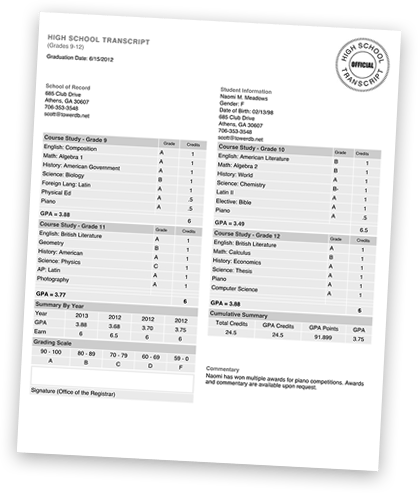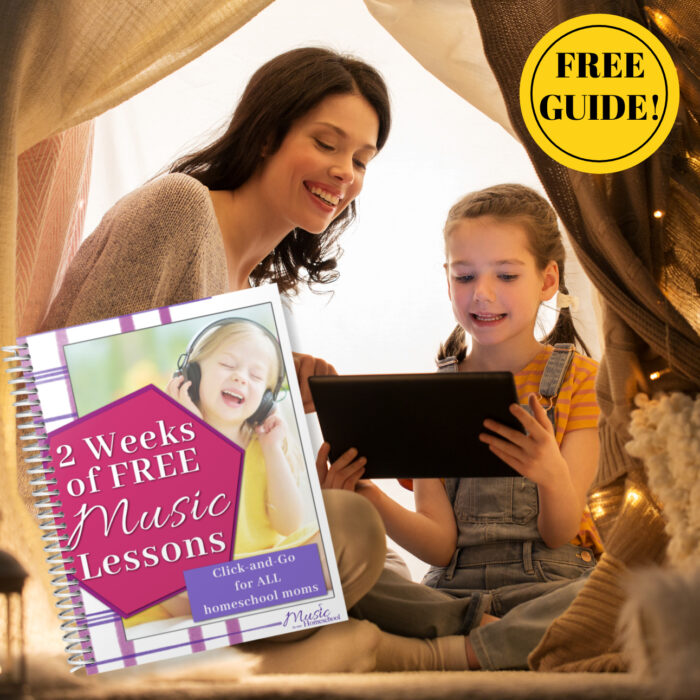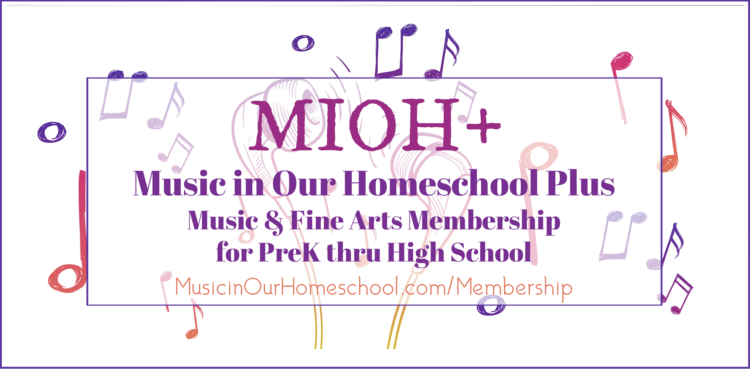My Best Tips for Homeschooling High School ~ from My Own Experience
So far I have graduated my five oldest from high school, four of whom were homeschooled all the way through. And, starting this fall, I'll have two high schoolers and one middle schooler left in our homeschool!
Today I'd like to share tips for homeschooling high school from my own experience — my best tips, curriculum recommendations, and advice!

Disclosure: I get commissions for purchases made through affiliate links in this post.
I started homeschooling my first child for kindergarten in 2005. By 2012 I had 8 children and I've homeschooled all of them the entire time, except for my oldest son who did his last three years of high school at a public school.
In 2019 my second child graduated from our homeschool high school, in 2021 my third child did, and in 2022,, my fourth child did. The first three got into the colleges of their choice and received scholarships. So, I know we did something right! The fourth child completed cosmetology school while homeschooling high school and entered the workforce as a nail tech (her top career aspiration) upon graduating.
Let me tell you how I started our homeschool high school planning.
Planning Tips for Homeschooling High School
The first thing I did was learn about credits and transcripts and other tips for homeschooling high school from Lee Binz at The HomeScholar and 7Sisters Homeschool. Next, I researched our state homeschool laws to see what was required. In Illinois where I live, they aren't too specific. And, third I checked the websites of our local public high school, the small Christian PreK – High School private school in the town north of us, and the large college-prep Catholic private high school in our town to see what their high school graduation requirements were. For example, how many years of English, Science, Math, and Foreign Language did they require? How many credits of Physical Education? What other electives did they recommend?
Then, I took those lists and sat down to write out a suggested plan for my kids.
Fast Transcripts
After I had a basic plan written out, I put all the info into the transcript software I use at FastTranscripts.com. What I like about FastTranscripts is that I can create them for all my kids and actually put the suggested plan in at the beginning of their high school years. If they change or drop a class, it's easy to delete it. On the side of the form, they have suggestions for how many credits and what classes to include for three different levels: General High School, General College Prep, and Rigorous College Prep.
I used General College Prep for most of my kids. And I'm using General High School for my daughter who is doing cosmetology at the tech campus (a high school vocational school in our area). She will graduate from homeschool high school ready to take her test for a cosmetology license and won't be going to college.

Get the Student's Input
Each year before actually purchasing the curriculum or courses, I sit down and talk with my students about their goals and what they'd prefer to take the next year. For example, this year I asked my soon-to-be 10th grader if he'd rather take Chemistry or Marine Biology this next year. Would my 9th grader prefer a live teaching class each week for Algebra I or a self-paced class?
There are always elective slots available for them, and I want them to start exploring different classes to help them grow or discover their interests.
My new favorite idea for an upper-level high school science course: Intro to Forensic Science from MasterBooks!
Not Always Getting a Choice
Other times I make the decision for what they will take, though. For several years we were part of a homeschool co-op. The classes being taught there usually determined what my kids would take, such as Advanced Biology, Government, or Personal Finance.
And, there are times when I want two of my high schoolers to take a class together, to make it simpler for me and so they can work together.
Also, I know that there are times when a live class is a better choice. So even though a few of my introverted kids prefer not to interact with an in-person or live online class, I have required it for certain subjects such as Spanish and Biology.
Local Public High School
In our area, the local public high school allowed homeschooled students to take certain classes even though not being there full-time. This is something that you'll have to research on your own because each district is different. I've even heard that things might change at a particular high school when a different principal begins to work there.
I have a friend in our neighborhood whose kids took band at the high school. My second son did two classes each semester for his junior year. He took some hands-on classes that I couldn't easily teach at home. And, I wanted him to have the materials and resources to use because his goals included studying mechanical engineering in college. That year he took Physics, Woodworking, and Graphic Design. He loved what he learned in the classes and is still applying what he learned in his college and personal endeavors. But, being at the public school that one year helped him decide NOT to go back his senior year.
Dual Enrollment
For his senior year, he decided to take some classes at the local community college such as Chemistry and Pre-Calculus. I'm really happy about the dual enrollment he did that year because I think it helped him prepare for college. He was able to see how a college class is different in terms of the speed in which it's taught (chemistry in one semester, rather than two, for example). And, he realized how much more organized he needed to be and how much studying is required.
My oldest daughter, who just graduated, did her entire year (except for dance and piano) at the community college. What's really neat is that it counts for both high school and college credit, and a one-semester class at the community college provides a full credit for the high school transcript. She was able to get extra credits which I believe helped her get accepted into the honors program at the college she'll attend in the fall, which was one of her goals. Again, I know that the experience prepared her for her freshman year of college since she learned a lot about seeking help through on-campus tutoring, seeing professors during office hours, and how to take notes in class and study better.
Designing Our Own Electives
One thing I love about homeschooling high school is that you can design your own electives. After my second son took a semester of graphic design at the public school, he wanted to continue growing his design skills on his own during his senior year. I took what I learned about how many hours are required for a high school credit and told him to just keep working on designs and track his hours. He received a half-credit for that elective his senior year. And, he uses the skills to make extra money now while he's in college by providing commissioned t-shirt designs for an online store a friend of his runs.
Technical School
I mentioned earlier that my fourth child does not have college as a goal. Years ago she mentioned that she'd like to become a nail tech, so we planned to send her to Cosmetology School. But, then we discovered that our local Tech Campus, which is a vocational school for high schoolers located next to the community college, provides Cosmetology as an option. It teaches the exact state-mandated curriculum that the cosmetology schools in Illinois teach, but since it's through the public school system, it's basically free. So, not only will she be graduating high school with the hours she'll need in order to take the licensing exam, she's doing it two years early and saving $10,000 – $20,000!
SAT and ACT
I know things are changing as far as colleges requiring the SAT and ACT tests for admission. But, as I've discovered with my daughter applying to colleges this year, many are still requiring test scores for earning an academic scholarship. I have had my kids start out by taking a free test through our library which is sponsored by a testing tutoring center in our area. After taking the test, they offer a free consultation to help explain the results and give recommendations for which test would be better for the student to focus on and what subject areas or skills they need to improve in.
There are online apps and resources such as Khan Academy, as well as testing workbooks kids can use to improve their scores. You might also want them to take a workshop or class. All three of my kids got decent scores and earned an academic scholarships.


Visiting Colleges
My next tip is to visit colleges in person if at all possible. It's amazing what a student can learn just by stepping onto the campus; walking into the buildings, dorms, classrooms, and dining rooms; and meeting some of the students and professors. Often, the student will be able to tell soon after leaving whether it's a place they could see themself at or not. It really helps to narrow down the choices.
We did quite a few college visits with my oldest sons after their junior year of high school. Unfortunately, we couldn't during the summers of 2020 and 2021 do this with my oldest daughter. She did more virtual tours, and I will say that these have greatly improved in the last couple of years. So, if you can't visit in person, be sure to at least do a virtual tour.

After your kids are in college, here are some inspirational quotes for college students to send them.
How to Pay for College
We don't allow our kids to take out loans. We tell them how much we're willing to pay each year, and they have to pay for the balance by choosing an affordable school, earning scholarships, and, if needed, by paying for it themselves with a job. I believe that having them put much of their own effort into paying (whether through cash they've earned or through applying for and being awarded scholarships), they are much more willing to do what is necessary to excel in their college work.
Tips for Homeschooling High School Final Thoughts
Resources and more Tips for Homeschooling High School
Free Download of the Checklist

Video
Related Posts:
- Online Courses in Your Homeschool
- How to Prepare for Your Senior Year of Homeschool High School
- How to Successfully Plan a Homeschool Graduation Ceremony and Party






